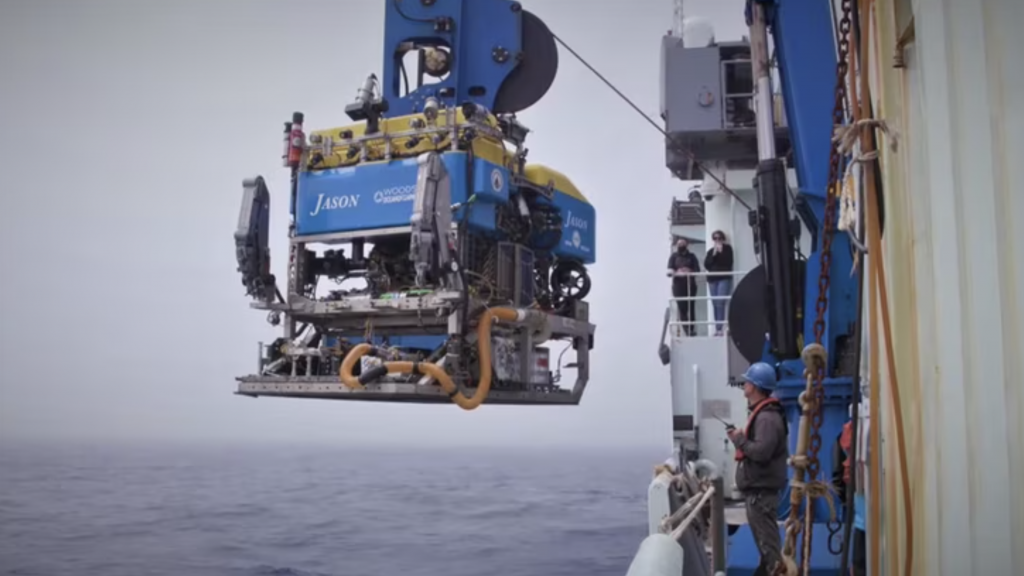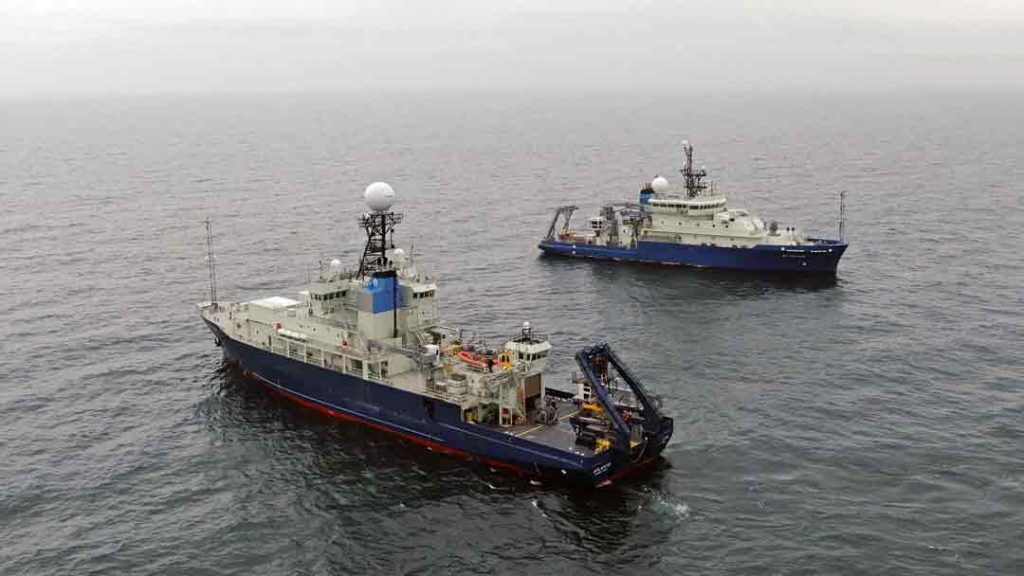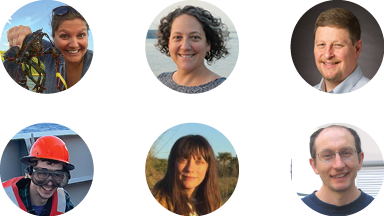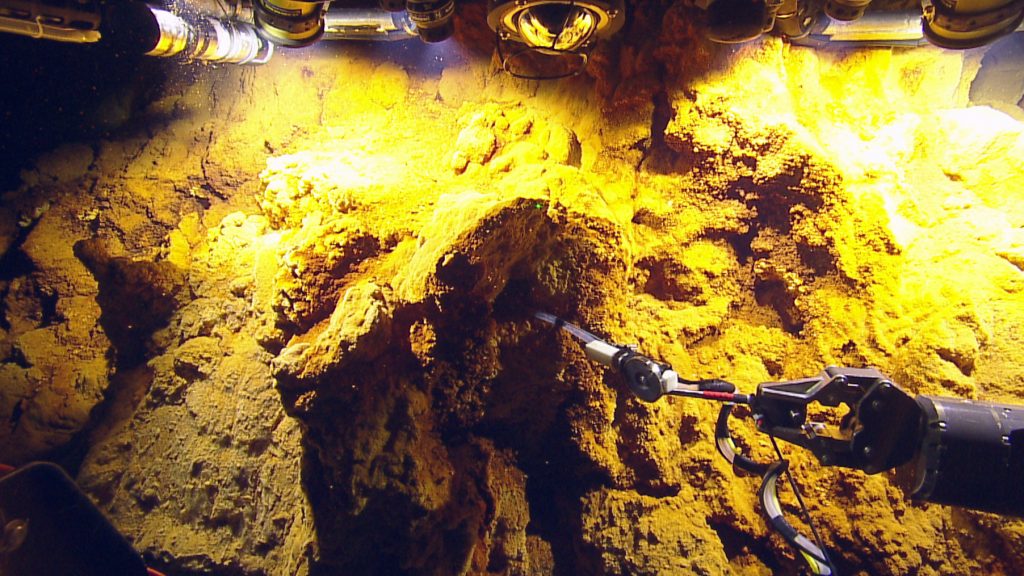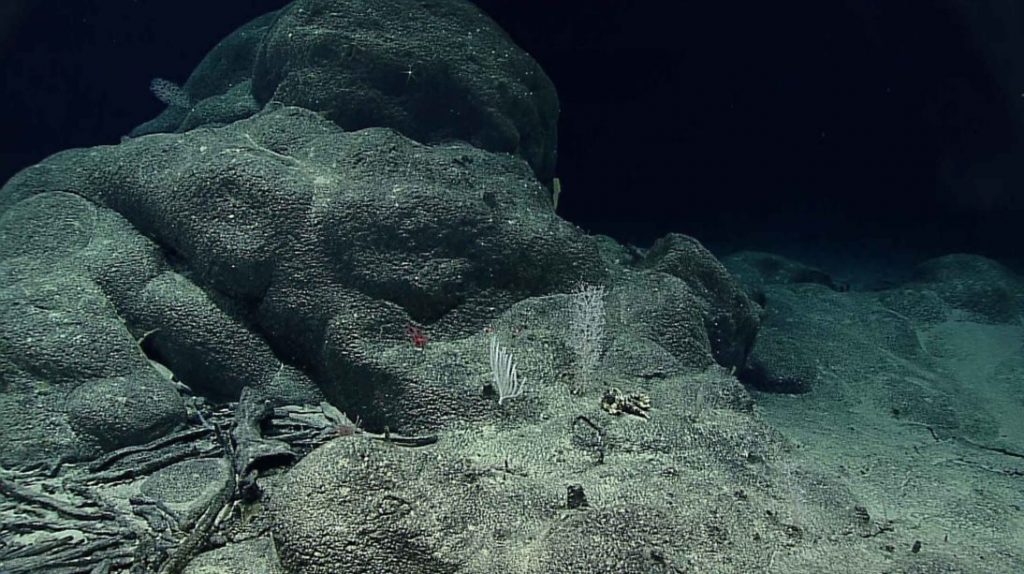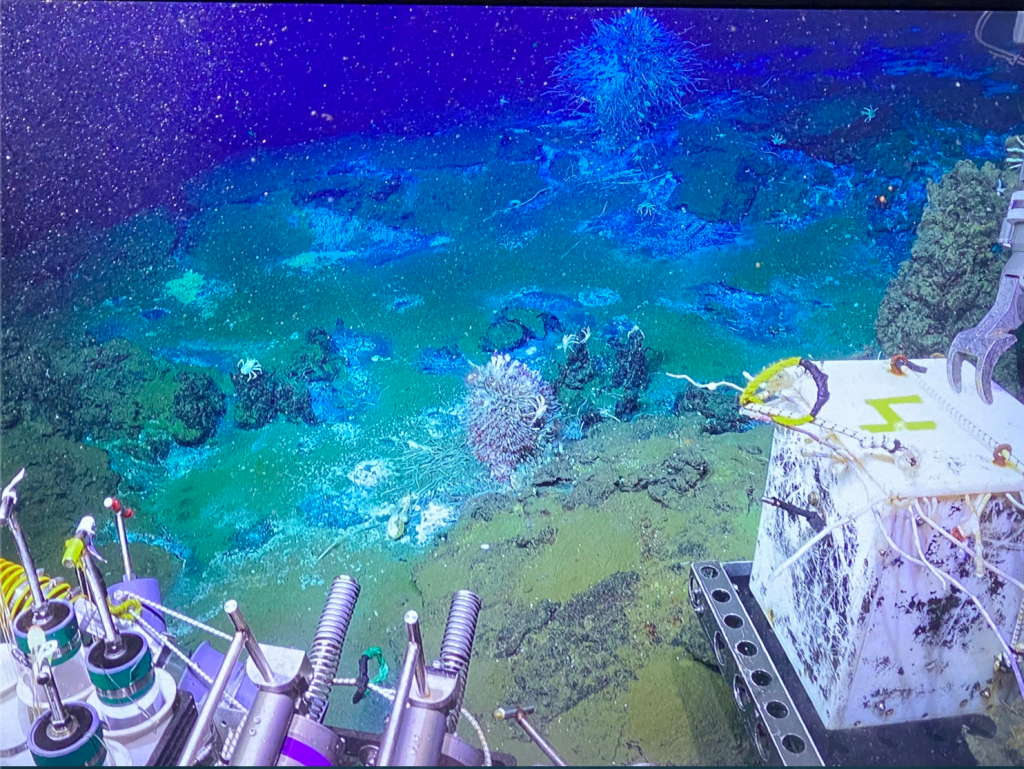ROV Jason
Oregon Public Broadcasting: Deep-sea volcano off the Oregon Coast helps scientists forecast eruptions
Oregon Public Broadcasting Reporter Jes Burns on takes a deep dive into monitoring volcanic activity at Axial Seamount—using ROV Jason—and developing future volcanic predictions. Read the whole story here and don’t miss the video version (or its original sea chanty).
Read MoreIncreased bandwidth on UNOLS fleet
Aerial view of R/V Atlantis and R/V Neil Armstrong at sea together. Photo by Kent Sheasley © Woods Hole Oceanographic Institution Both R/V Neil Armstrong and R/V Atlantis will have expanded bandwidth at sea for the rest of 2023. The faster upload and download speeds are part of a fleetwide trial, funded by the Office…
Read MoreDiving into ocean data: Meet the NDSF data team
The National Deep Submergence Facility—home to Alvin, Jason, and Sentry—is more than just an innovator and operator of underwater vehicles. It also manages data collected by those vehicles. And that adds up to a lot of data.
Read MoreGoing with the flow
Science at sea-part two In the spirit of adjustment, I asked scientists on the expedition how their goals and approaches have evolved since we’ve been underway. Here is a sampler of what they said: Isaac Keohane (University of South Carolina) brought two computers and an external hard drive on the expedition for redundancy. As luck…
Read MoreThe importance of having a plan B (and C, D, E, and F)
While power outages aren’t excessively common on research cruises, this event does encapsulate the nature of conducting science at sea: anything that can go wrong might go wrong at any given moment and—as happened today—without any prior warning. Chief Scientist Chris German’s mantra is to treat every day at sea like it may be your last day for conducting science, which is why he always has a plan B (and a plan C, D, E, and F if it comes to it).
Read MoreTaking Kama’ehuakanaloa’s Temperature After Recent Unrest
ROV Hercules sampling for hydrothermal fluid compositions and associated microbiology at the Dragon Cave vent, Kama’ehuakanaloa seamount, during the SUBSEA program co-funded by NOAA and NASA in 2018. The 2023 Kama’ehuakanaloa Seamount Vents Expedition will be revisiting and sampling this site. (Photo courtesy of Ocean Exploration Trust) Kama’ehuakanaloa Seamount (formerly Lo’ihi) has active hydrothermal vents…
Read MoreKama’ehuakanaloa Seamount Hydrothermal Vent Expedition: Expanding Early Career Involvement
Early career researchers from various institutions set sail aboard the Kilo Moana Research Vessel today to visit Kama’ehuakanaloa Seamount (formerly known as Lō’ihi), the youngest volcano in the Hawaiian-Emperor Seamount Chain. This NSF-funded collaborative research expedition, led by WHOI Senior Scientists Chris German and Jeff Seewald, is investigating the impact on the subseafloor hydrothermal circulation…
Read MoreFor Deep Ocean Mining, Questions Abound
ROV Jason is helping researchers get their arms around the question of what damage seafloor mining might do to little-studied deep-ocean ecosystems. Learn more in this podcast from Undark magazine. Listen now >
Read MoreOregon Public Broadcasting: Battling crabs 250 miles off the Oregon Coast, while studying an underwater volcano
“OPB science reporter Jes Burns shares a strange tale of “crabotage” that emerged as scientists aboard the research vessel Thompson tried to answer complicated questions about the Axial Seamount.” Read the whole story.
Read MoreExploring the Escanaba Trough with Jason and Sentry
The ROV Jason team on a joint Jason and Sentry expedition to explore the Escanaba Trough in June 2022. Pictured: (L-R standing) Ben Tradd, James Pelowski, Gianna Conroy, Gabrielle Inglis, Chris Judge, Scott McCue, (L-R seated, knee) Megan Bachant, Peter Hall, Amanda Sutherland, and Mario Fernandez. The Escanaba Trough is about 200 miles off the…
Read More
